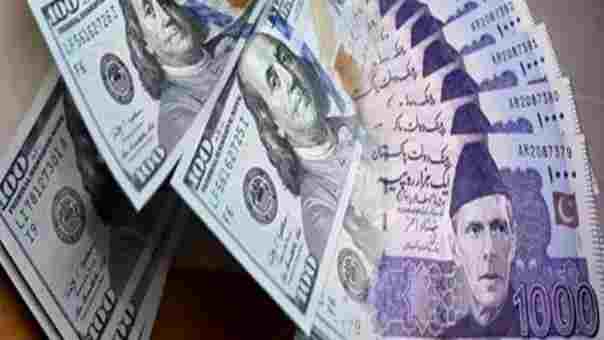Karachi, June 23, 2025 – The Pakistani rupee continued to weaken against the dollar on Monday, marking its 10th consecutive session of losses in the interbank market.
The domestic currency depreciated by 17 paisas, closing at PKR 283.87 against the dollar, compared to Friday’s closing rate of PKR 283.70.
Market experts attribute the persistent decline of the rupee to multiple converging factors, including regional geopolitical tensions, surging international oil prices, and quarter-end import and corporate payment requirements. Heightened hostilities in the Middle East, particularly between Iran and Israel, have driven crude prices higher, leading to increased dollar outflows as Pakistan, a major oil importer, struggles to meet its fuel demands.
Additionally, the presentation of the federal budget for FY2025-26 has stirred uncertainty in financial markets. New tax proposals and spending plans have raised inflationary concerns, dampened investor sentiment, and intensified speculative trading in the rupee-dollar market. The resulting lack of confidence is further amplifying pressure on the rupee, with investors and importers rushing to secure dollar holdings in anticipation of further volatility.
Despite these headwinds, certain positive indicators offer a temporary reprieve. The State Bank of Pakistan (SBP) reported that workers’ remittances surged to $34.9 billion during the first 11 months of FY25 (July–May), registering a robust 28.8% increase year-on-year. In May 2025 alone, remittances reached $3.7 billion, providing critical dollar liquidity and offering some buffer against the rupee’s depreciation.
Moreover, SBP data shows that Pakistan’s foreign exchange reserves increased by $130 million during the week ending June 13, 2025. This modest rise in reserves strengthens the central bank’s ability to manage the rupee-dollar exchange rate and intervene in the currency market if needed.
Nonetheless, analysts remain cautious, warning that the rupee could remain under pressure in the short term. The ongoing geopolitical crises, fluctuations in global commodity prices, and fiscal uncertainties will continue to shape the rupee’s trajectory. The pace of future dollar inflows, including remittances and official financing, will be critical in determining the stability of the rupee moving forward.
